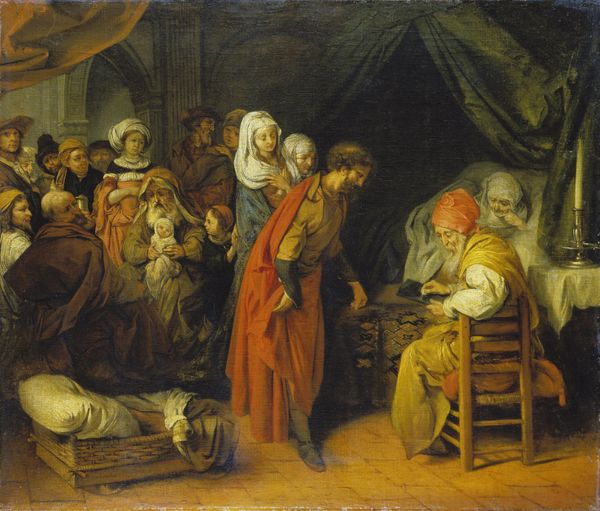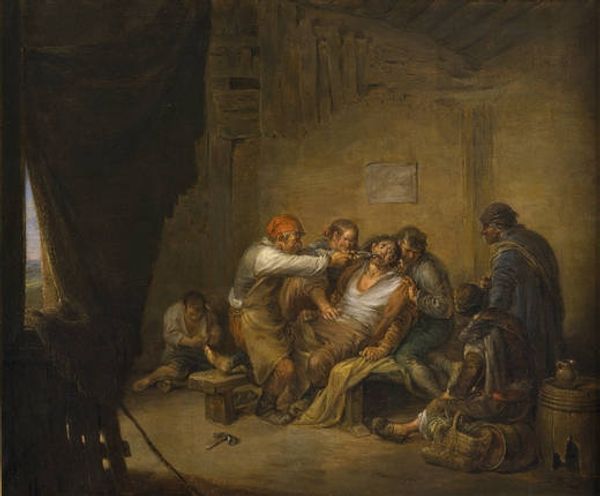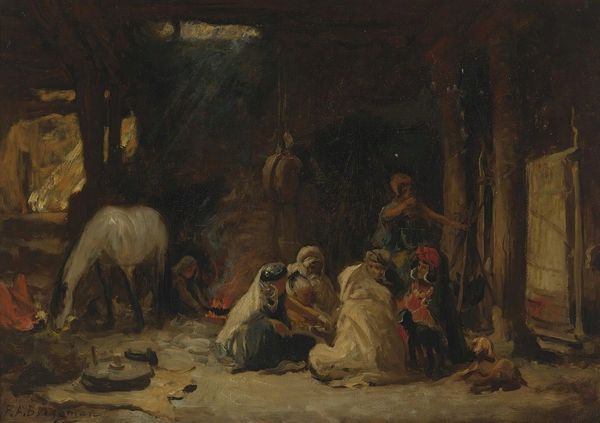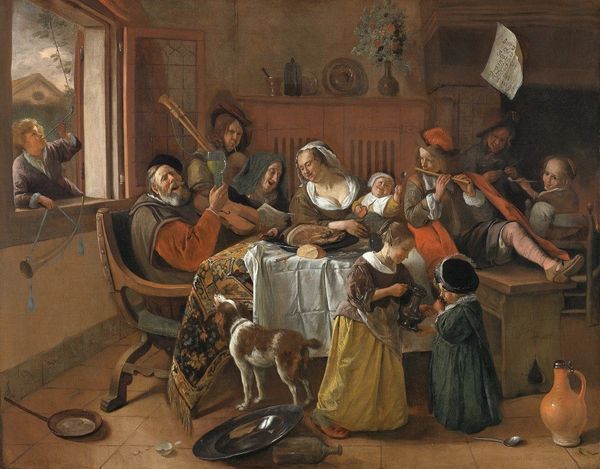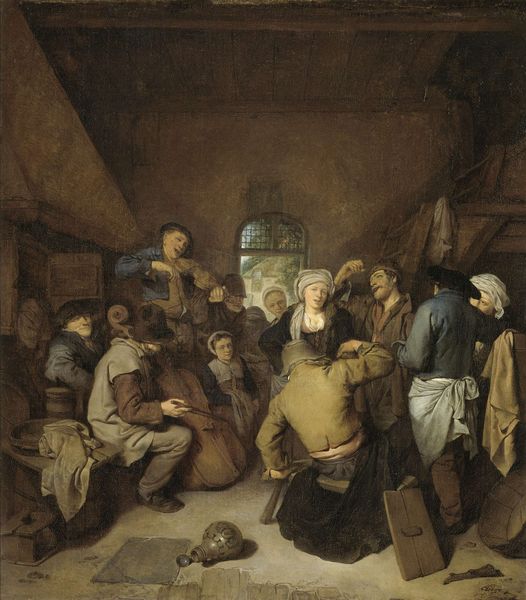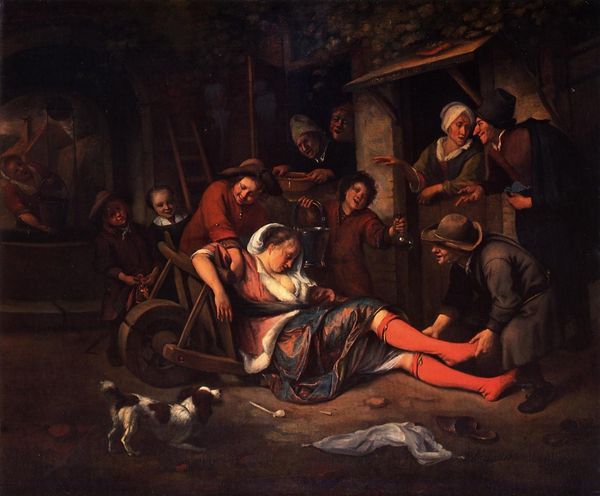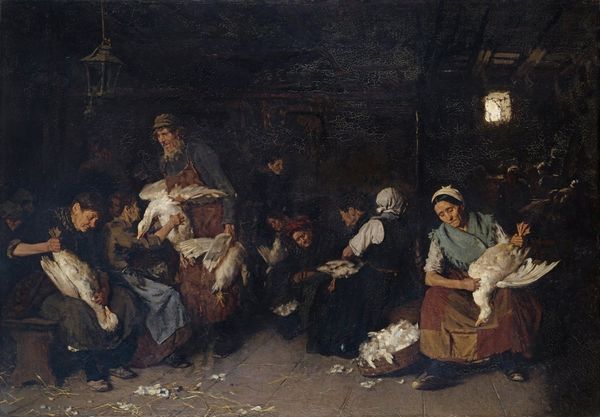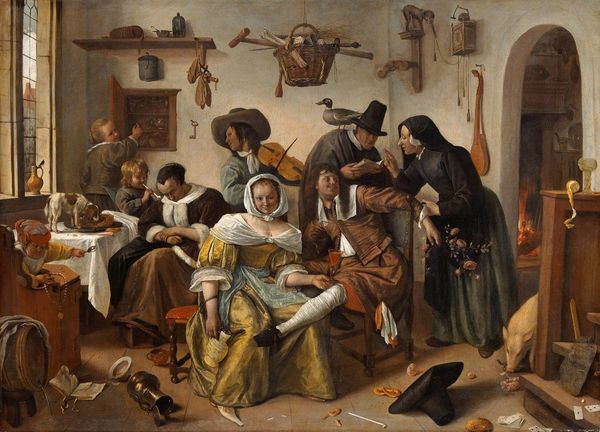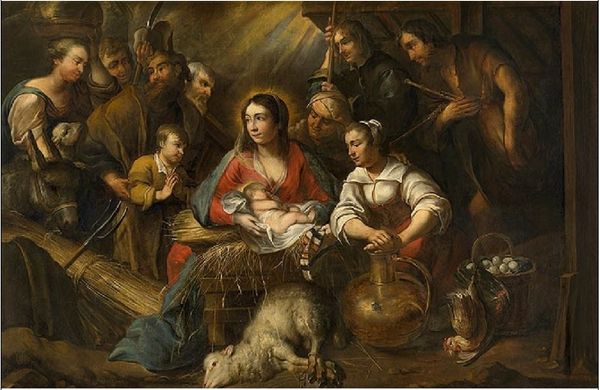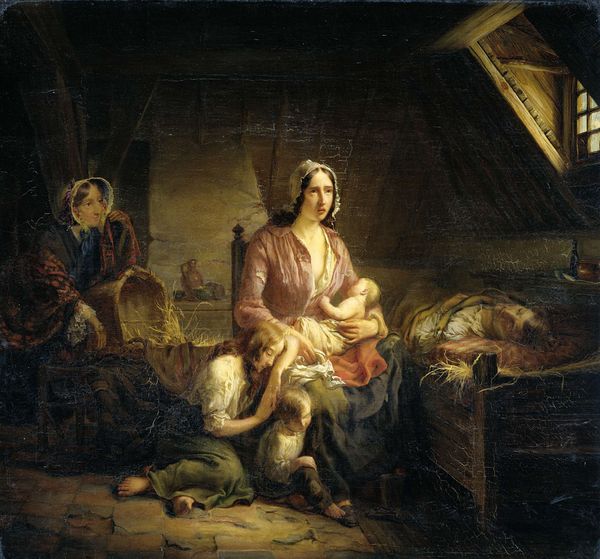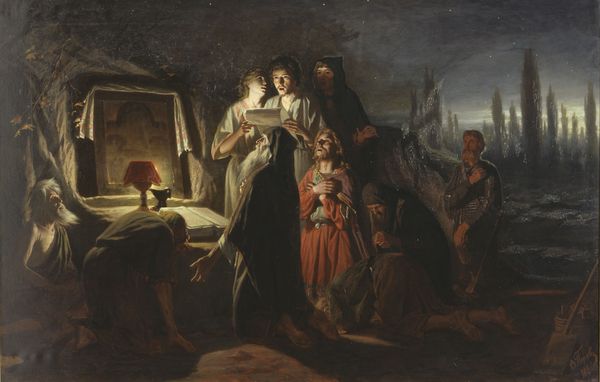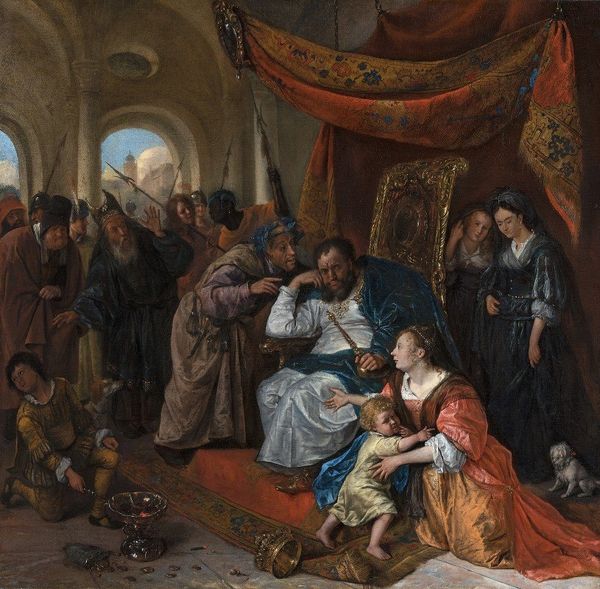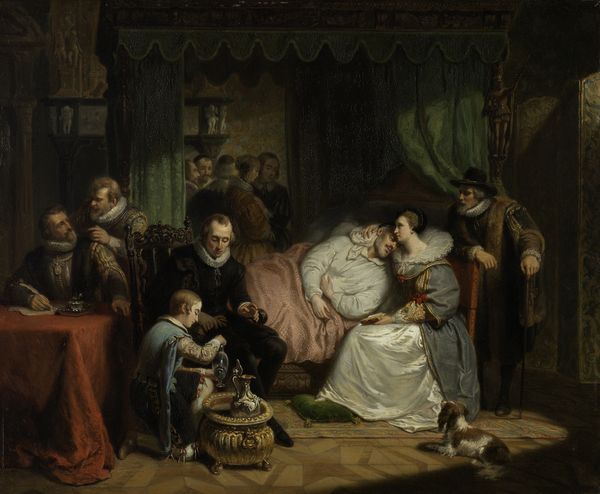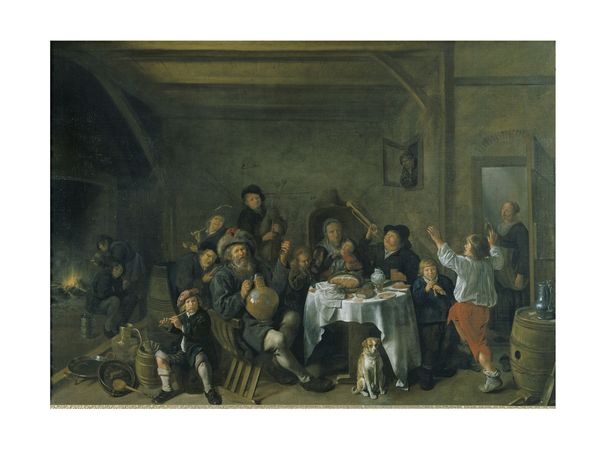
painting, oil-paint
#
narrative-art
#
baroque
#
dutch-golden-age
#
painting
#
oil-paint
#
figuration
#
genre-painting
#
history-painting
Copyright: Public Domain: Artvee
Editor: We are looking at Jan Steen's "The Adoration of the Shepherds," painted sometime in the 1660s or 70s. It's an oil painting that, to me, has a surprisingly intimate and almost earthy feel for such a grand religious scene. What do you make of Steen’s interpretation here? Curator: Steen's "Adoration" isn't just a biblical scene; it’s a powerful commentary on Dutch society. Look at how he populates the stable not just with shepherds, but with everyday figures—are these just humble folk or do they represent something deeper? The blurred lines of a more egalatarian society, perhaps? Editor: That’s interesting. I hadn't considered the social implications of the figures he chose to include. The composition seems almost… chaotic? Curator: Exactly. Consider how this contrasts with more idealized, classically-inspired depictions. Steen introduces a certain level of disorder, maybe even humour. But why? What might Steen be saying about power, faith, and the ordinary person's role within religious and social hierarchies? Is this a challenge to the elite of the day, painted under the guise of this very common scene from the Bible? Editor: So you're suggesting that the apparent chaos reflects a questioning of societal norms and a subtle rebellion against established power structures? Curator: Precisely! And look at Mary—she's a mother first, divine second, isn’t she? Steen isn't afraid to humanize even the most sacred figures. Editor: I see it now. It's more than just a pretty picture; it's a commentary on the social dynamics of his time! It certainly makes me look at Dutch Golden Age paintings in a new way. Curator: And that’s precisely why contextualizing art within its social and historical framework is crucial. It transforms a simple genre painting into a powerful piece of social critique!
Comments
No comments
Be the first to comment and join the conversation on the ultimate creative platform.
